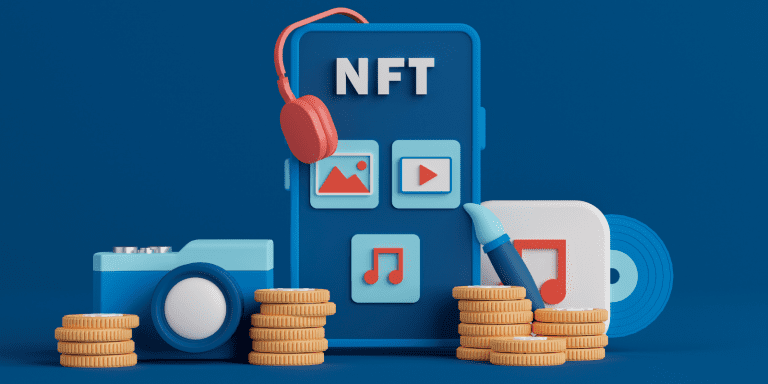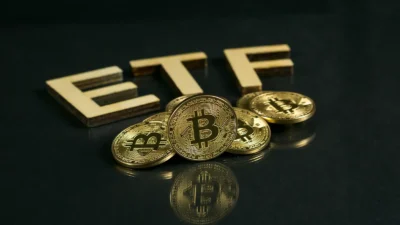Table of Contents
ToggleIn the world of cryptocurrency, there are a variety of different types of tokens. Of these, Non-Fungible Tokens (NFTs) are some of the most interesting. NFTs can be used in a wide range of ways, from tracking digital assets to representing ownership of digital or physical items.
However, one issue with NFTs is that they often tend to vanish into thin air. In this blog post, we’ll take a look at why this happens and what can be done about it. Stay tuned!
What are NFTs
NFTs, or non-fungible tokens, are digital assets that have unique properties and functions that set them apart from traditional fungible tokens. Unlike regular tokens, which can easily be replaced or exchanged for other tokens of the same value, NFTs have singular identities that establish ownership and enable a wide range of interesting applications.
For example, NFTs can be used to represent physical items such as collectable cards, artwork, or real estate. They can also be programmed to hold information about things like academic credentials or medical histories.
Whether you want to create a virtual trading card game or securely document important personal data, NFTs make it possible to easily represent nearly any kind of digital asset in a decentralized way. A large number of people that were seen involved to buy Bitcoin in Dubai or anywhere else are also inclined towards NFTs. So if you’re looking for innovative ways to store and secure your valuable digital assets, look no further than NFTs!
How NFTs Work
At the core of how NFTs work is what is known as the “ERC-721” standard. This specification was originally designed for digital collectables like crypto collectables and digital game assets but has since been used for many other types of NFTs as well.

The ERC-721 protocol functions by creating a token registry on the blockchain that specifies not only who owns a particular ERC-721 asset but also defines its individual characteristics. These characteristics could include things like age, rarity, value, or any number of other properties that give an NFT value in certain use cases.
Because of their unique nature, NFTs have become increasingly popular in recent years. Many games now employ NFTs as items that can be collected and traded by players; concepts such as full ownership over digital assets and provable scarcity are driving widespread interest in this new asset class.
As more businesses and developers begin to experiment with NFTs, we will likely see even more exciting applications for these specialized tokens emerge in the near future.
Practical Applications of NFTs
NFTs can be used to store data in a secure and transparent way
NFTs can be used to store data in a secure and transparent way, making them a potentially revolutionary tool for businesses, governments, and organizations of all kinds. By creating customized NFTs that are cryptographically linked to an organization’s unique digital assets and protocols, companies can keep sensitive information safe from theft, fraud, manipulation, or corruption.
Additionally, the transparent nature of NFTs makes it easy for anyone with access to view these assets and monitor how they are being used. Ultimately, the practical application of NFTs is that they give businesses an innovative and powerful way to protect their most important assets and ensure trust in their systems.
They can be used as digital assets that represent ownership of certain items or experiences
While NFTs may seem like a relatively new concept, the practical application of this technology goes back centuries. In fact, NFTs have long been used as a way to represent ownership of certain items or experiences. For example, certificates of title are used to denote property ownership, while tickets and tokens are used as proof of admission to events or entry into certain spaces.
Also, NFTs can also be used in more creative ways, such as serving as rewards that unlock exclusive content or features. Overall, the practical application of NFTs is clear: they offer an easy and efficient way to manage and transfer digital assets for both personal and commercial purposes.
Can be used to create unique and memorable experiences for customers or fans
Another practical application of NFTs is that they can be used to create truly memorable experiences for customers or fans. When some famous artists share his/her collection, it makes these NFTs valuable because of his/her name or previous work. For example, an artist might issue limited-edition NFTs created from a unique piece of art, giving fans an opportunity to purchase these rare and valuable tokens and become part of the artist’s creative process.
Similarly, retailers might issue NFTs that gives exclusive access to special sales or promotions for customers who purchase them. Whatever the use case, it is clear that NFTs have the potential to revolutionize a wide range of industries by offering consumers exciting new ways to engage with brands and products.
Whether as souvenirs, collectables, or simply as novel forms of currency, NFTs offer countless possibilities for creating engaging experiences that go beyond traditional advertising methods and tap into our need for connection and communication with others.
Reasons of Expensive NFTs Keep Vanishing
Lack of Understanding
At the core of this issue is a fundamental mismatch between the technical capabilities of NFTs, and how users expect them to behave. While some NFTs are designed to be fungible, meaning that they can be easily interchangeable with one another, others are purely non-fungible, having unique physical or digital properties that make them almost impossible to replicate or replace.
This difference in functionality creates a lot of confusion among users, who may not fully understand the implications of trading in one type of NFT versus another.
Volatile Market
Another reason that NFTs keep vanishing is the volatile nature of the market, just like when people plan to buy BTC in Dubai or anywhere in the world, they are often extra careful because of the volatile nature of cryptocurrencies. The prices of NFTs can fluctuate wildly, and there is no guarantee that an NFT will retain its value over time. This volatility can be off-putting for potential investors, as they may not be comfortable with the risks involved.
Lack of Utility
Another reason that NFTs keep vanishing is their lack of utility. Unlike traditional assets such as stocks or bonds, NFTs do not have any inherent value. They are simply digital files that can be traded or sold like any other commodity. However, many people are still unsure of what they can actually do with an NFT once they own it, which makes them less likely to invest in them.
Scams and Fraud
Unfortunately, there have been a number of scams and frauds associated with NFTs. Some scammers have created fake NFTs and sold them to unsuspecting investors. Others have created platforms that allow people to create and sell fake NFTs. These scams have made many people wary of investing in NFTs, as they are concerned about losing their money to fraudsters.
Environmental Concerns
Another reason that NFTs keep vanishing is due to environmental concerns. The process of creating an NFT requires a great deal of energy, which can have a negative impact on the environment. Additionally, many people are concerned about the amount of data that is stored on the blockchain associated with NFTs. This data takes up a significant amount of space, and it is not clear how it will be disposed of once it is no longer needed.
Example of NFTs Vanishing
Last month, Tom Kuennen from Ontario paid $500 in cryptocurrency for a JPEG of an Elon Musk-themed “Moon Ticket” from DarpaLabs. He bought it through OpenSea, which is one of the biggest vendors of non-fungible tokens (NFTs), with the intention to sell it later at a higher price.

“It’s like a casino,” he said in an interview. “If it goes up 100 times you resell it, if it doesn’t, well, you don’t tell anyone.”
Unfortunately, he never had the opportunity to find out. A week after signing up for the service, he went to retrieve his artwork from the site’s digital “wallet,” but instead found an ominous banner reading: “This page has gone off-grid. We’ve got a 404 error and explored deep and wide, but we can’t find the page you’re looking for.”
He expected to see the artwork on the page, but it had disappeared entirely. “I have no history of ever purchasing it or owning it,” he said. “Now there’s nothing. My money’s gone.”
Role of Platforms in the Vanishing of an NFTs
NFT markets, like OpenSea, Rarible, Foundation, Nifty Gateway, and more only exist to display the media file linked with an NFT code on the blockchain–they do not actually store any images.
According to Ed Clements, a community manager for OpenSea, these platforms work by analogy like a window into a gallery where anyone can see your NFT. He went on to say in an interview with Vice that any platform has the power to close its viewing window whenever they want, but the NFT still exists even if it is not being displayed by that viewer.
According to experts, some investors have faced difficulty accessing their NFTs due to the “404 file not found” error. This may be because the media file for which they bought an NFT is deleted from its source or the URL for that source has changed or broken.
In addition to being suppressed by a marketplace, an NFT can also be removed at its source, if it violates the platform’s terms of service, such as for copyright infringement. In this case, you wouldn’t be able to see it no matter where you looked for it. NFTs may also become invisible if they are issued in an unreadable standard.
If an exchange that sells NFTs shuts down, its files will disappear along with the company, which would mean goodbye to your NFT.
The Possible Solution to Avoid NFTs Vanishing

Some tech-savvy people believe that the InterPlanetary File System (IPFS), a distributed data-sharing network, can solve the problem of NFT media storage. Basically, multiple users host the same content through IPFS so that there is less risk of losing decentralized artwork. Instead of just pointing to one location or file, IFPS points to different copies in several locations around the world.
Impact on the NFT market
Although a few NFTs have disappeared, this is not a prevalent issue and investors should not be alarmed. The majority of sales are unaffected, and in fact, numbers continue to rise astronomically; In Q3 2021 alone, $10.7 billion dollars worth of NFTs were sold.
Some crypto users are hesitant to invest in NFTs because the market is so new and they fear that there may be some issues with security or sudden disappearances of NFTs. However, as time goes on people will begin to see improvements in the security features of the NFT blockchain.
Future of NFTs
The future of NFTs is bright, as these tokens have opened up a whole new world of possibilities in the digital space. With their unique properties and ability to represent real-world assets, NFTs have quickly become one of the most exciting emerging technologies in today’s digital landscape. NFTs and cryptocurrencies move side by side. If you want to sell BTC in the UAE or some other part of the globe, you’ll find many buyers. The same is the case with NFTs, you will find multiple buyers if your art is worth buying and good thing is that this market has the potential to grow further in a near future.
They have already been used to create thriving gaming communities, and many are predicting that they will soon revolutionize other areas, such as e-commerce, healthcare, and social networking.
Given their immense potential for growth and disruption, it is likely that NFTs will continue to be a major focus for companies and investors in the coming years. As this technology continues to evolve and mature, we can expect to see more innovative applications and use cases for NFTs, bringing exciting new benefits to users around the globe.
For anyone who wants to stay ahead of the curve in this rapidly changing landscape, it is crucial to keep up with the latest developments in NFTs and stay attuned to their ongoing evolution.








